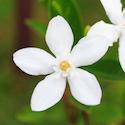Star Jasmine plants are exquisite evergreen climbing shrubs or vines. They are known worldwide for their tropical looks and enticing scents produced by their waxy, creamy and (usually) white flowers. Star Jasmines are not particularly difficult to care for and can easily be grown either outdoors or indoors.
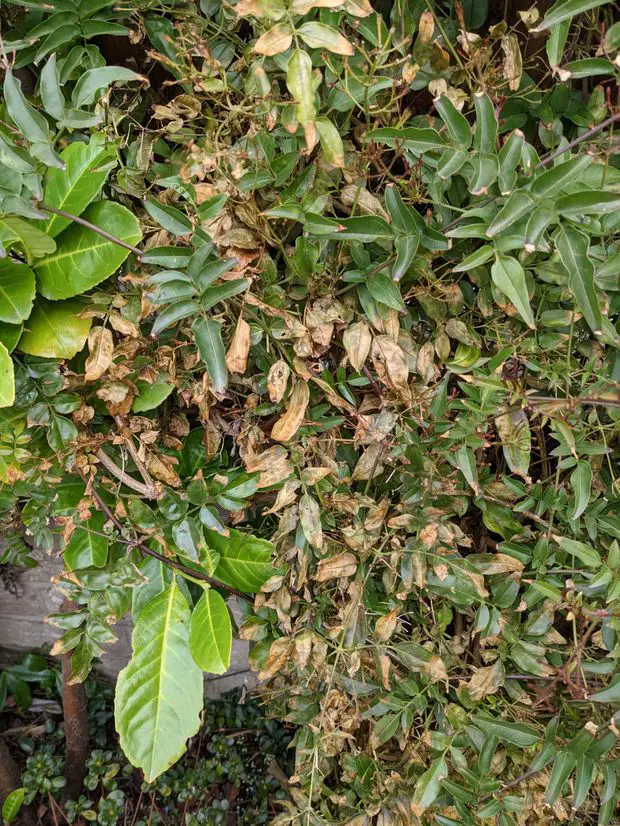
Outdoors, can be planted as climbing vines on fences or as bushes on balconies. Whereas indoors, they can be kept in pots for inside enjoyment. But, why are the leaves on my Star Jasmine turning brown?
Click here to learn more about how to grow jasmine in pots.
Star Jasmine leaves can turn brown because of weather fluctuations, herbicide misuse, nutrient deficiencies, improper fertilisation, root-related diseases or pests, under-watering or over-watering and too much sunlight exposure.
Star Jasmine plants thrive with consistent care and attention year-round. This includes regular pruning, appropriate watering, and proper feeding techniques to ensure their health and longevity.
Do you need some awesome gardening tools to get started or to reach the next level with your jasmines? Check my last top favourite tools:
- Garden Tool Set
- Heavy Duty Garden Tool Kit
- Heavy Duty Gardening Hand Tools with Tools Organizer
- Garden Kneeler and Seat
- SPEAR & JACKSON SECATEURS
These plants are renowned for their lush, vibrant green foliage and exquisite blossoms, which flourish with the right care. This care involves well-drained soil, consistent watering, ample sunlight, and the right climatic conditions.
For instance, they prefer a location with a balanced mix of full sun and partial shade. Therefore, it's best to position your Star Jasmine in a warm, somewhat shaded area with a touch of humidity.
Star jasmine (Trachelospermum) is a delightful addition to summer gardens, offering a sea of beautiful flowers and a captivating fragrance. This evergreen beauty also adds charm to winter landscapes, infusing a Mediterranean vibe into your garden. Keep reading to discover more about Star Jasmine, including how to plant, propagate, and prune it.
Star jasmine (Trachelospermum) originates from tropical and subtropical regions in Asia. In Europe, it thrives, especially in the Mediterranean and wine-growing regions. However, it's often cultivated as a potted plant in Europe.
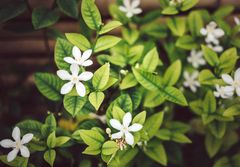
Whilst Star Jasmine plants are generally speaking pretty easy to maintain and care for, they are still quite susceptible to certain pests and diseases such as mealybugs, whiteflies, aphids and fungi.
If the aforementioned points regarding the location of the jasmine plants are not properly implemented, they can become particularly susceptible to browning of their leaves.
If you notice brown leaves on your jasmine plant, you can certainly prune them with ease. However, it is crucial to address the root cause of the issue by properly caring for your plant, in order to prevent a recurrence.
It is always best to address the underlying issues as soon as possible to prevent further damage. There are a few offenders responsible for those beautiful leaves turning brown. Pests and diseases can be potential causes of brown leaves on your jasmine plant. Also, improper herbicidal use, sudden weather changes or a lack of essential nutrients can affect the vibrant green colour of your Star jasmine plants.
In this article, I will cover all the reasons why your Star Jasmine leaves are turning brown, the solutions, as well as, a few tips on how to plant, grow and care for a Star Jasmine plant. Keep reading below for all the details!
How to plant and grow Star Jasmine. Top Tips
Star Jasmine, known for its elegant, liana-like growth, can climb to heights of up to 4 meters. Its star-shaped flowers, available in white, pink, or light yellow varieties, emit a delightful jasmine fragrance, especially in the evening.
These blossoms typically grace us from April to August, with the potential to bloom until September under careful care. The plant's evergreen leaves, containing toxic milky sap, adorn the side shoots year-round. These are the most popular and my top favourite Star Jasmine varieties:
- Trachelospermum jasminoides: This classic species of Star Jasmine showcases beautiful white blossoms with a captivating fragrance.
- Trachelospermum jasminoides ˈStar Of Toscaneˈ: Tuscan Star Jasmine delights with numerous bright yellow flowers exuding the signature jasmine scent.
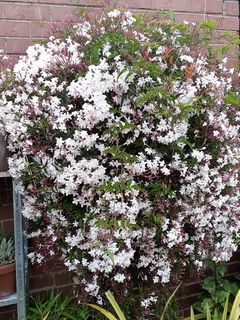
- Trachelospermum asiaticum: Yellow Star Jasmine, although less known than its white counterpart, boasts better cold tolerance and blooms in shades from cream to yellow.
- Trachelospermum asiaticum ˈPink Airˈ: This particular variety of Star Jasmine features an unusual pink flower color that forms a striking contrast with its evergreen leaves, making it a true showpiece.
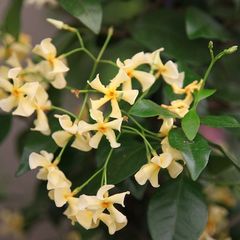
Planting Star Jasmine offers versatile choices, whether you prefer it as a climbing plant, ground cover, or even as a bonsai with climbing aids. In some European regions, it's commonly potted due to limited cold hardiness, enduring temperatures as low as -15°C for short durations.
For planting, use high-quality potting soil, such as the one I always recommend Miracle-Gro Potting Mix. If you would prefer an organic blend, my favourite brand and definetely one of the highest quality potting soils in the market, try Espoma Organic Potting Soil Mix. This organic blend provides essential nutrients for robust growth and is environmentally friendly. Ensuring well-draining soil is crucial to prevent water logging; you can improve drainage by adding about one-third of expanded clay.
Star Jasmine thrives in partially shaded or sunny spots but should be shielded from frost in winter. To prevent potential leaf damage from "sunburn," choose a partially shaded location and provide climbing support like a trellis.
As an expert gardener and plant lover in general, I can recommend enough that you get your hands in a proper temperature and weather measurement device like my ECOWITT WS2910 Wi-Fi Weather Station. This product is amazing and since I use it, I can consistenly prevent any big environmental shock in my plants.
Click here to learn more about how to protect Star jasmine from frost.
Why are my Star Jasmine leaves turning brown? All the reasons with solutions
The most frequent cause of why jasmine plant leaves may turn brown is changes in weather conditions. Your jasmine plant will be much more sensitive to this during the winter and frost season.
Another common factor is the inadequate use of herbicides, which can inhibit the chlorophyll production machinery, as well as hijack the photosynthetic equipment of the plant.
That leads to fading of the green colouring of the foliage to a light brown tone instead. Improper use of herbicidal products can also lead to a nutrient deficit in the soil.
In addition, a lack of specific nutrients such as nitrogen, phosphorus, iron or manganese, could also lead to the leaves turning brown. It could be that those nutrients are not absorbed properly through the rooting system due to diseases or pests.
I quickly learnt that not being sloppy in the feeding processes of jasmines went a long way. Also using high quality fertilisers like Miracle-Gro Feeder pays off so much! It comes with a dispenser attached already to ensure you aim for the right amount of fertiliser and it is spread put evenly across your plant. Super handy!
Lastly, either under-watering or over-watering and sunlight overexposure can be detrimental to leaf health causing a discolouration towards a dull brown tone.
Do you want to know more details and how to treat these situations? Keep reading!
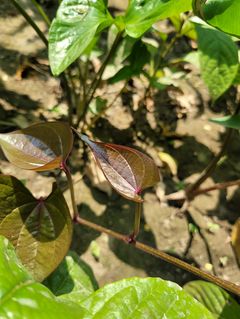
1. Environmental Conditions
If the leaves of your Star jasmine plant are turning dark to light brown, your plant could be suffering from temperature stress due to weather or climate shock. This sort of discolouration is common in a jasmine shrub that is in outdoors, under stress and does not look too healthy.
Winter Damage. Is Star Jasmine a perennial and winter hardy?
These weather shock depigmentation injuries are quite common during freezing periods, but they can also occur when there are extreme heat conditions, such as during a drought period.
The reason why the bronzing and brown toning of the leaves take place is a loss of water during the really cold periods and frosts. Leaves and branches get damaged exposing the inner flesh of the plant to winds and sudden temperature drops.
Usually, when the seasonal temperatures drop to below 32 degrees Fahrenheit (0 °C), the water at the ground level where your jasmine plant is placed will freeze and therefore, will damage the cells throughout the plant including leaves and stems, thus stopping the growth of the plant.
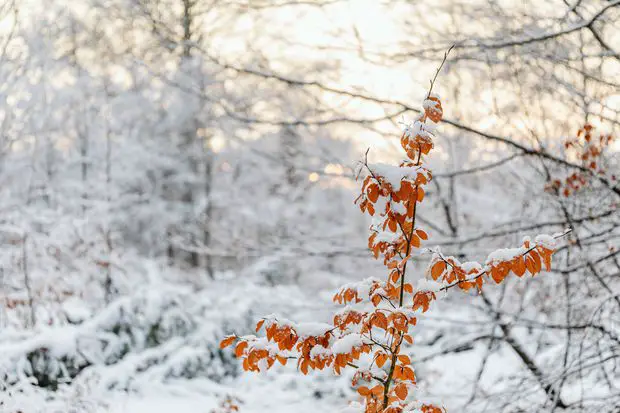
That process stops a chlorophyll formation, which causes the green colour, hence making the leaves of your jasmine plant turn brown.
The good news is that this situation is usually not fatal and will only damage your plant temporarily. The plant will need time to re-build up colour throughout the warmer months ahead.
You may observe that your jasmine plant, positioned in a southwest-facing orientation where it receives direct sunlight, is more vulnerable to cold weather impacts compared to a north-facing location.
To address this concern effectively, consider applying a layer of pine straw mulch or orchid bark mulch to insulate the soil and maintain a consistent, moisture-rich environment throughout the frosty season.
Star Jasmines are often strategically placed as climbing shrubs along fences, which tend to be at lower levels, increasing their exposure to winter elements and harsh winds. Consequently, this exposure can lead to the development of dry, brown, or reddish discolouration along the veins of the leaves.
These blemishes signify damage to leaf cells caused by winter conditions, potentially resulting in an overall brown hue and eventual leaf drop if left unattended.
Solution
An excellent solution to mitigate this issue is to provide your Jasmine with a sun-exposed brick wall to climb. Brick surfaces have the advantage of retaining heat and warmth, which they then radiate to the jasmine, effectively minimising the adverse effects of winter weather.
Sun Exposure
The vibrant green leaves of Star Jasmine are one of its most appealing features, but they can sometimes take on a brown hue when exposed to excessive sunlight.
This phenomenon is commonly referred to as sunburn, and it occurs when the plant receives too much direct sunlight, particularly during the scorching hours of the day.
Sunburn on Star Jasmine leaves typically manifests as dry, brown patches, often starting along the edges or tips of the leaves, primarily occurring in early autumn.
It's important to note that Star Jasmine prefers a partially shaded environment, making it susceptible to sun damage when placed in full sun. Sunburn occurs primarily in early autumn when there is a combination of intense sun and cooler temperatures.
During this time, the plant may struggle to cope with the increased transpiration rate, leading to moisture loss and resulting in telltale brown spots.
Solution
To prevent sunburn and maintain the lush green appearance of your Star Jasmine, consider providing it with some shade during the hottest parts of the day.
Whether through natural shade from nearby plants or the strategic placement of shade cloth, protecting your Star Jasmine from harsh, direct sunlight can help it thrive and retain its healthy, green foliage.
To safeguard your Star Jasmine and maintain its lush green appearance, here is a summary of the practical steps you can take:
- Morning Sun, Afternoon Shade: If possible, position your Star Jasmine in a location where it receives morning sunlight and afternoon shade. This natural light regimen is ideal for the plant's photosynthesis while shielding it from the harsh midday sun.
- Regular Watering: Keep a consistent watering schedule to ensure your Star Jasmine remains adequately hydrated. Moist soil helps the plant withstand the drying effects of sunlight. However, avoid overwatering, as waterlogged soil can lead to other problems. I personally love the INNAV8 Water Hose Nozzle Sprayer attached to my water hose as a way to water my outdoors jasmines as it is super handy, has different water pressure streams and this way I ensure my jasmines get consistent water levels and pressure.
- Mulching: Apply a layer of organic mulch, such as pine straw or bark, around the base of your Star Jasmine. Mulch helps retain soil moisture, regulate soil temperature, and reduce evaporation, all of which contribute to the plant's well-being.
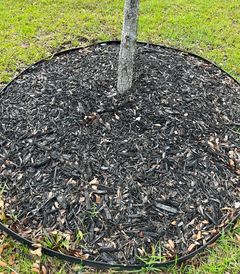
- Pruning and Training: Prune your Star Jasmine as needed to remove damaged or sunburned leaves. Pruning also encourages healthy growth and can help shape the plant. Additionally, consider training your Star Jasmine to climb along a trellis or structure, as this can provide natural shade to the lower leaves.
- Seasonal Monitoring: Keep a watchful eye on your Star Jasmine, especially during the transition from summer to autumn when sunburn risk is higher. Regularly inspect the leaves for any signs of browning or damage and take prompt action if needed.
- Soil Quality: Ensure your plant is growing in well-drained soil that retains moisture without becoming waterlogged. Amending the soil with organic matter can improve its water-holding capacity.
2. Under watering
It is a well-established fact that mature and well-established jasmine plants possess a remarkable resilience to drought conditions. However, to maintain their optimal health and vibrant green foliage, a consistent watering schedule is essential. This need for proper hydration is a key factor in preventing the browning of jasmine leaves.
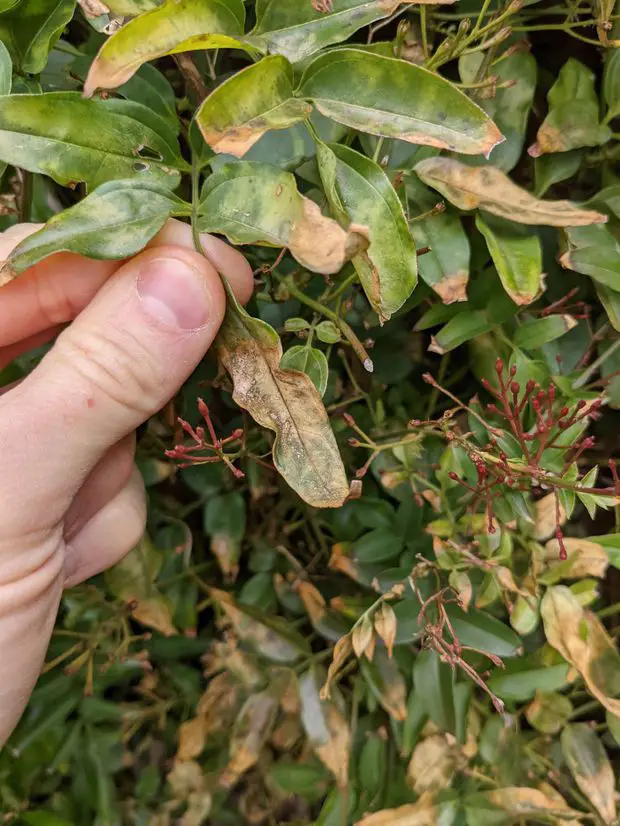
When a jasmine plant experiences insufficient water intake, the soil's moisture content decreases, causing the roots to dehydrate. Consequently, the roots instinctively conserve as much moisture as possible to ensure the plant's survival.
This conservation effort, unfortunately, triggers the onset of leaf desiccation. Dry leaves gradually transform into an unsightly shade of brown with a brittle, crispy texture.
Solution
To counteract this issue effectively, consider implementing a sound mulching technique using materials like bark or straw. Especially during the winter or cooler months, mulch serves as a protective barrier that retains moisture in the soil, preventing the untimely browning of leaves.
During the warmer months, if moisture levels are insufficient, increase your watering frequency or the volume of water provided. However, always ensure that the soil maintains proper drainage to avoid the opposite extreme—overwatering, which brings us to the next crucial point.
I personally always use an all purpose hose end sprayer, which I fill with water and make sure my Star jasmines are always moist and the foliage hydrated, it is super practical.
3. Over-watering
As emphasised earlier, it's crucial to adhere to a consistent watering regimen for our jasmine plants. These graceful blooms thrive when the soil is adequately moist, yet they excel in well-drained conditions. This prerequisite is paramount for enabling jasmines to nurture their lush foliage and blossoms to their full potential.
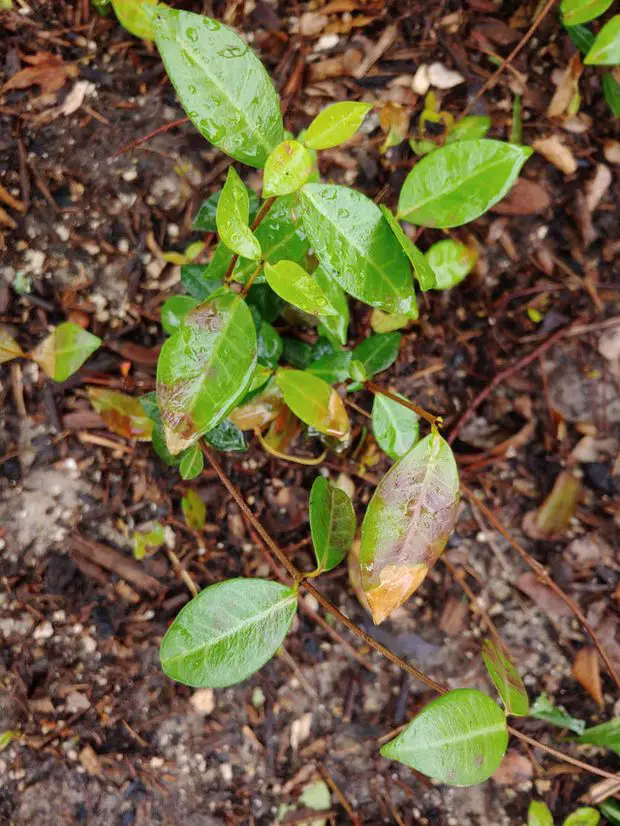
However, overzealous watering in poorly draining soil can lead to detrimental consequences. When excess water lingers in the soil for too long, or if it doesn't approach a reasonable dryness level between waterings, it can spell trouble for the plant's delicate roots. Prolonged water saturation can stifle root oxygen supply, potentially resulting in root rot—a severe ailment.
Root rot disrupts the natural flow of water and nutrients throughout the plant, hindering its ability to absorb essential nourishment. This can manifest as the gradual browning of leaves—a telltale sign of distress.
Solution
To rectify this issue effectively, mulching with bark or straw can prove highly beneficial, as these materials absorb excess moisture, promoting a healthier soil balance.
Additionally, ensure your soil boasts excellent drainage, possibly by elevating the plant bed above a gravel foundation. Maintaining the right moisture levels is key.
Consider a balanced approach: proper fertilisation with chicken manure or bone meal and a reduced watering frequency, ensuring the soil remains adequately moist without becoming overly saturated before the next watering.
To gauge moisture levels accurately, you can employ the finger test—insert your finger about 2 inches deep into the soil and feel for moisture, or employ a readily available moisture meter near your plant for precision.
4. Pests and diseases
Numerous factors can lead to the browning of jasmine leaves, with viruses being a potential culprit. However, one particularly adept pest specialises in this unsavoury task—the aphid. These minuscule, soft-bodied insects are proficient sap-suckers, making our jasmine plants their favoured feasting grounds.
Aphids penetrate the plant's stems and leaves, all the while excreting a sticky substance known as honeydew onto the leaves' surfaces. This, unfortunately, provides an ideal breeding ground for fungal diseases, resulting in the development of unsightly brown and black spots on the leaves.
In cases of significant aphid infestations, these pests can drain the plant of vital sap and essential fluids necessary for its growth, ultimately causing the leaves to take on a brown, stunted appearance.
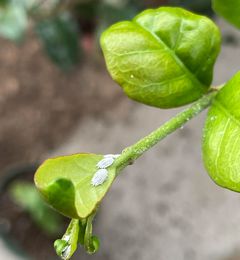
Solution
To combat this issue effectively, consider introducing natural predators like ladybugs or mealybugs to your plant. These beneficial insects can help control the aphid population by feasting on them.
Additionally, you can employ Neem Oil as a foliar spray over a period of two to three weeks to reduce aphid numbers. This dual approach not only safeguards your jasmine plant but also fosters a healthier, pest-resistant environment for its flourishing growth.
If you want to learn more about how to combat these nasty aphids in detail, I have written an entire article about it, go check it out! how to get rid of aphids on your jasmine plant.
5. Herbicide Damage
Herbicides can be valuable tools for eradicating weeds and unwanted shrubs in the vicinity of your jasmine plant, particularly those containing primary ingredients such as Atrazine or Metribuzin.
However, it's important to be aware of the potential adverse effects that herbicides can inflict, such as leaf desiccation and discolouration.
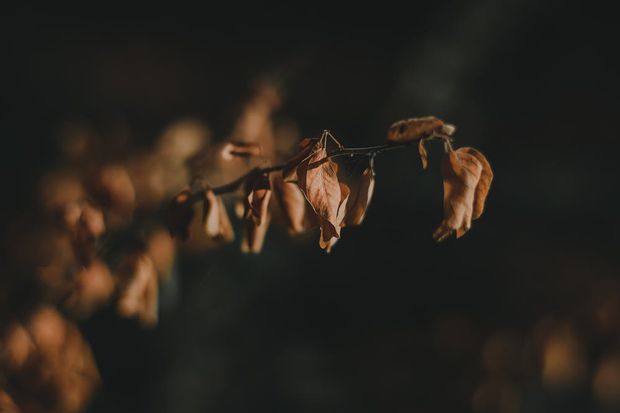
The detrimental impact of herbicides stems from their interference with the plant's photosynthetic machinery. These chemicals target the crucial proteins involved in the intricate process by which a plant converts light energy into essential nutrients.
Some herbicides take a different approach, disrupting the formation of pigments within the plant by inhibiting specific proteins responsible for pigment development.
Typically, herbicides are absorbed through the plant's root system and subsequently travel upward through the stem, eventually reaching the leaves. It's at this juncture that they thwart the proteins responsible for producing carotenoids.
Among their many roles, carotenoids act as guardians of the chlorophyll molecule, shielding it from excessive light intensity and contributing to the rich green hue seen in jasmine leaves.
Consequently, the use of herbicides can lead to a gradual fading of the leaves vibrant green colour. This diminishment occurs as chlorophyll and/or carotenoid levels decline, resulting in the leaves adopting a light brownish hue over time.
Furthermore, some herbicides are administered as foliar sprays, which can seep into the soil, affecting the root system. This interference hinders the roots' ability to efficiently absorb water and essential nutrients, ultimately impeding overall plant growth.
Understanding these potential repercussions of herbicide use is essential for making informed decisions when managing your jasmine plant and its surroundings.
Solution
While herbicides can be effective tools for weed control, their potential impact on your jasmine plant's health and appearance necessitates careful consideration.
To mitigate the adverse effects of herbicides and maintain your jasmine's well-being, here are some practical solutions:
- Selective Application: Exercise caution when applying herbicides near your jasmine plant. Consider using a shield or barrier to prevent herbicide overspray or runoff from coming into direct contact with your plant's leaves and roots.
- Hand Weeding: When possible, opt for manual weed removal techniques, such as hand weeding or using mulch to smother weeds. This reduces the need for herbicides in the first place, minimising the risk of herbicide-related issues.
- Choose Herbicides Wisely: If herbicide use is necessary, select products specifically formulated for your particular weed issue and follow the manufacturer's instructions meticulously. Some herbicides are less harmful to desirable plants, so look for options that are labelled as safe for ornamental shrubs like jasmine.
- Protect Foliage: Prior to applying herbicides, carefully cover your jasmine plant with a protective shield, such as a plastic sheet or cardboard, to shield the leaves from direct contact with the herbicide.
- Monitoring and Dilution: Dilute herbicides according to the manufacturer's recommendations to minimise their potency. Regularly monitor your jasmine plant for any signs of leaf discolouration or damage, and if observed, take prompt action to rinse the plant thoroughly with water to dilute the herbicide's effects.
- Restore Nutrients: If herbicide use has affected your jasmine's nutrient uptake or overall health, consider fertilising the soil around the plant with a balanced, slow-release fertiliser. This can help rejuvenate the plant and promote new growth.
6. Nutrient Deficiency
Star Jasmine, like all plants, relies on a delicate balance of nutrients for healthy growth and lush foliage. When certain essential nutrients are insufficient, the leaves may start to turn brown. Let’s have a look at the main nutrients to keep an eye for:
- 1. Nitrogen (N): Nitrogen is a primary nutrient crucial for chlorophyll production, which is vital for photosynthesis. When Star Jasmine lacks sufficient nitrogen, chlorophyll levels decrease, causing the leaves to lose their vibrant green colour.
- 2. Phosphorus (P): Phosphorus is essential for energy transfer and root development. A deficiency in phosphorus can lead to slow growth, weak root systems, and, ultimately, browning of leaves.
- 3. Potassium (K): Potassium regulates water movement and nutrient uptake in plants. Inadequate potassium can disrupt these processes, resulting in water stress, leaf discolouration, and browning.
- 4. Magnesium (Mg): Magnesium is a secondary nutrient involved in chlorophyll formation. When Star Jasmine lacks magnesium, chlorophyll production declines, leading to yellowing and eventually browning of leaves.
- 5. Iron (Fe): Iron is essential for chlorophyll synthesis and photosynthesis. An iron deficiency can cause inter-veinal chlorosis, where the tissue between leaf veins turns yellow, and then brown.
Solution
To address nutrient deficiencies and revive your Star Jasmine's vibrancy, begin by conducting a soil test to pinpoint the specific nutrient deficiencies. Visit your local gardening center or shop online to find a soil testing kit.
These kits are user-friendly and designed for home gardeners. Some kits provide instant results with color-coded indicators, while others require sending samples to a laboratory for analysis.
If your soil's pH is outside the optimal range for your plants, take steps to adjust it. For example, you can add lime to raise pH in acidic soil or sulphur to lower pH in alkaline soil.
Based on the soil test results, choose a balanced fertiliser designed for ornamental plants. Ensure it contains adequate nitrogen, phosphorus, potassium, and micronutrients like magnesium and iron.
Follow the recommended fertiliser application rates and schedules, typically in the growing season, to correct the nutrient imbalances gradually. Maintain consistent and adequate watering practices to support nutrient absorption through the root system. Avoid overwatering, as it can leach nutrients from the soil.
Lastly, prune away brown or damaged leaves to encourage new growth and reduce stress on the plant. Also, apply a layer of organic mulch around the base of your Star Jasmine. Mulch helps conserve moisture, regulate soil temperature, and enhance nutrient retention in the root zone.
Final thoughts
There you go! I hope all these points help you understand why your jasmine leaves are turning brown and how to optimise your plant care moving forward.
Once your jasmine plant is recovering and on its way to thriving health, make sure you tweak your watering techniques to avoid both under-watering and over-watering.
Also, ensure that you adjust fertilisation and feeding processes to avoid any nutrient deficiency and potential pests and diseases invading our beloved Star Jasmine.
Lastly, prune diseased and dry leaves and ensure your plant is located in an optimal position so that it doesn’t get too much direct sunlight (or too little), as we need to avoid at all costs, that our plant gets sunburnt.
